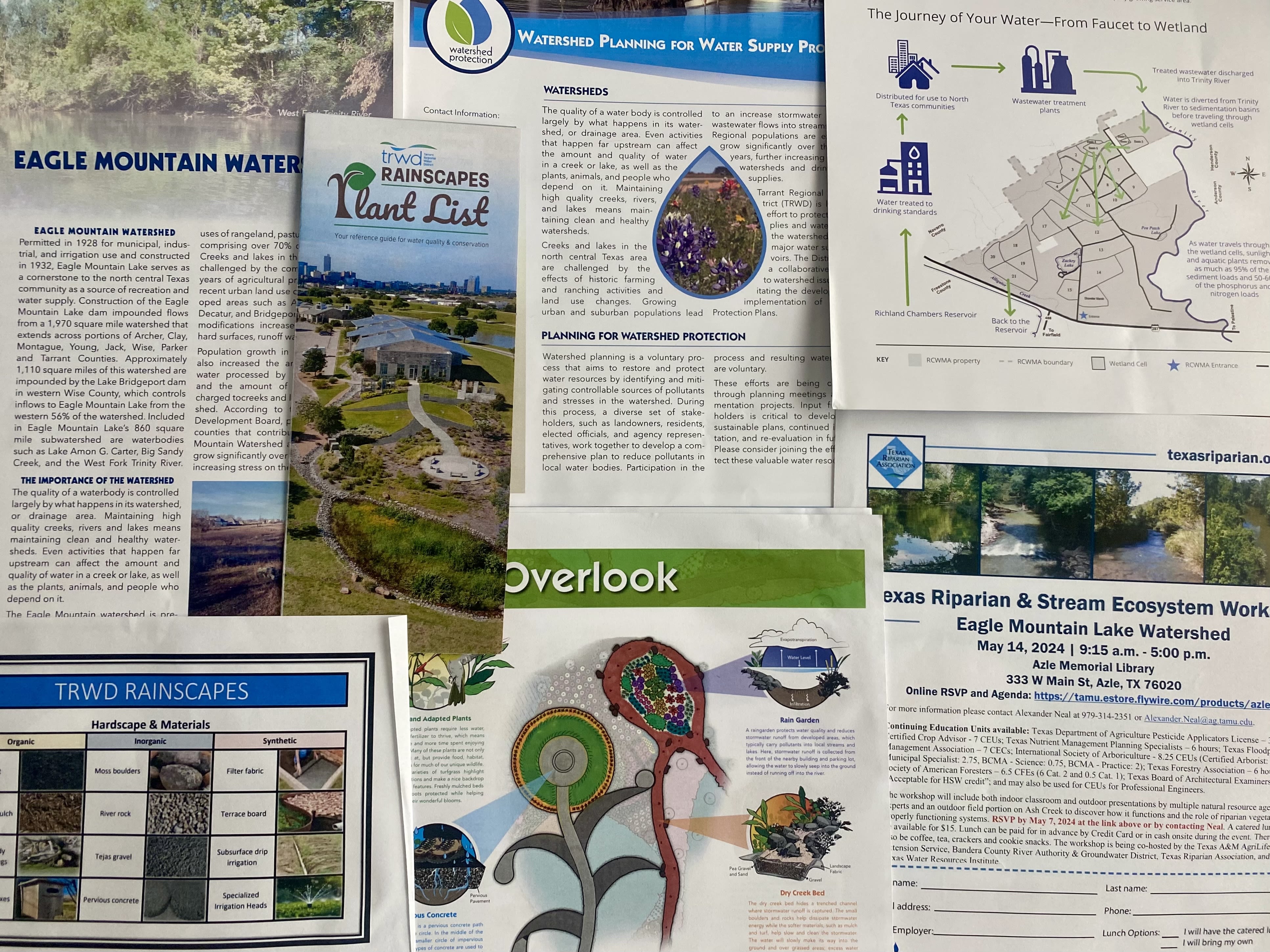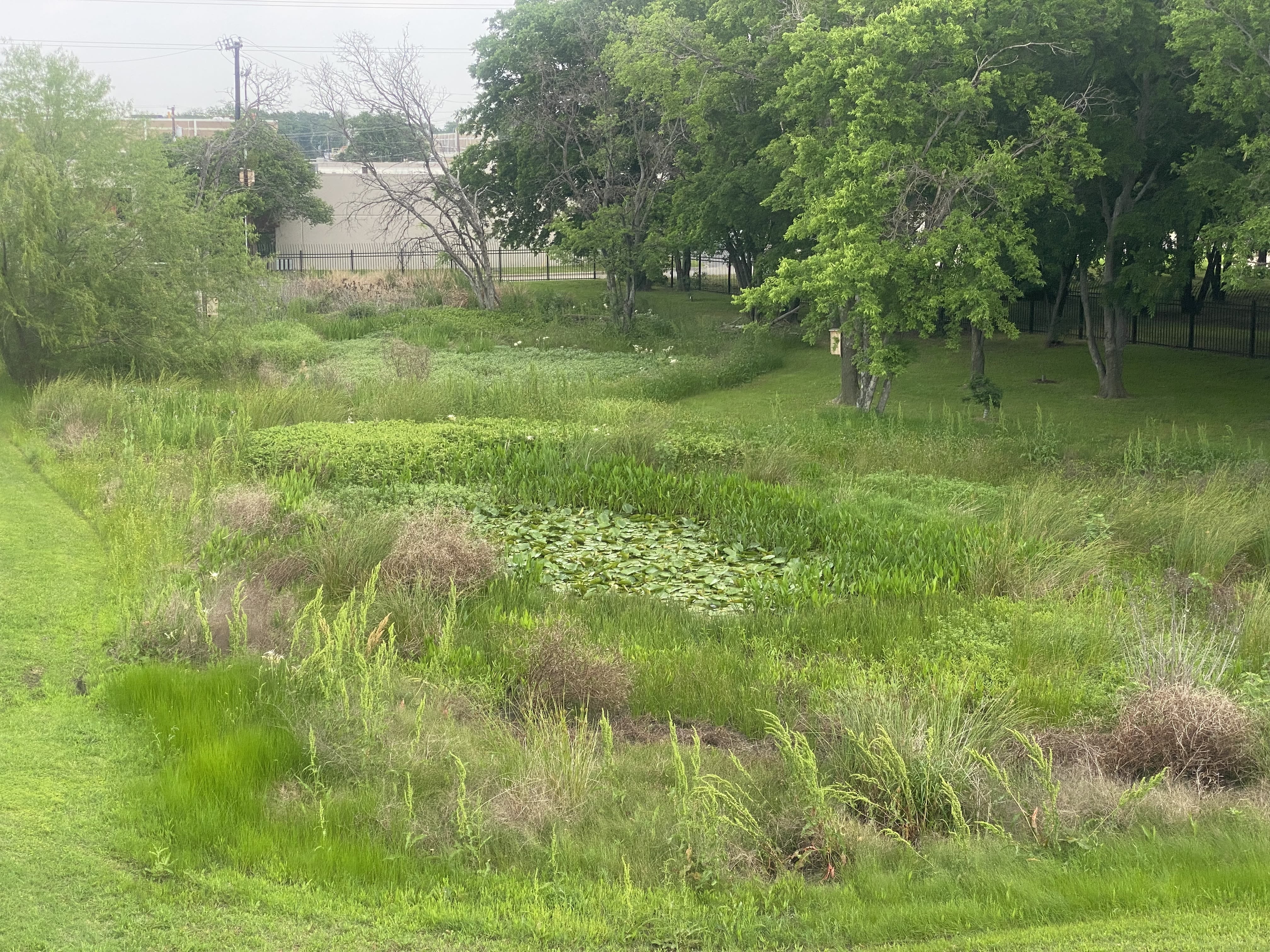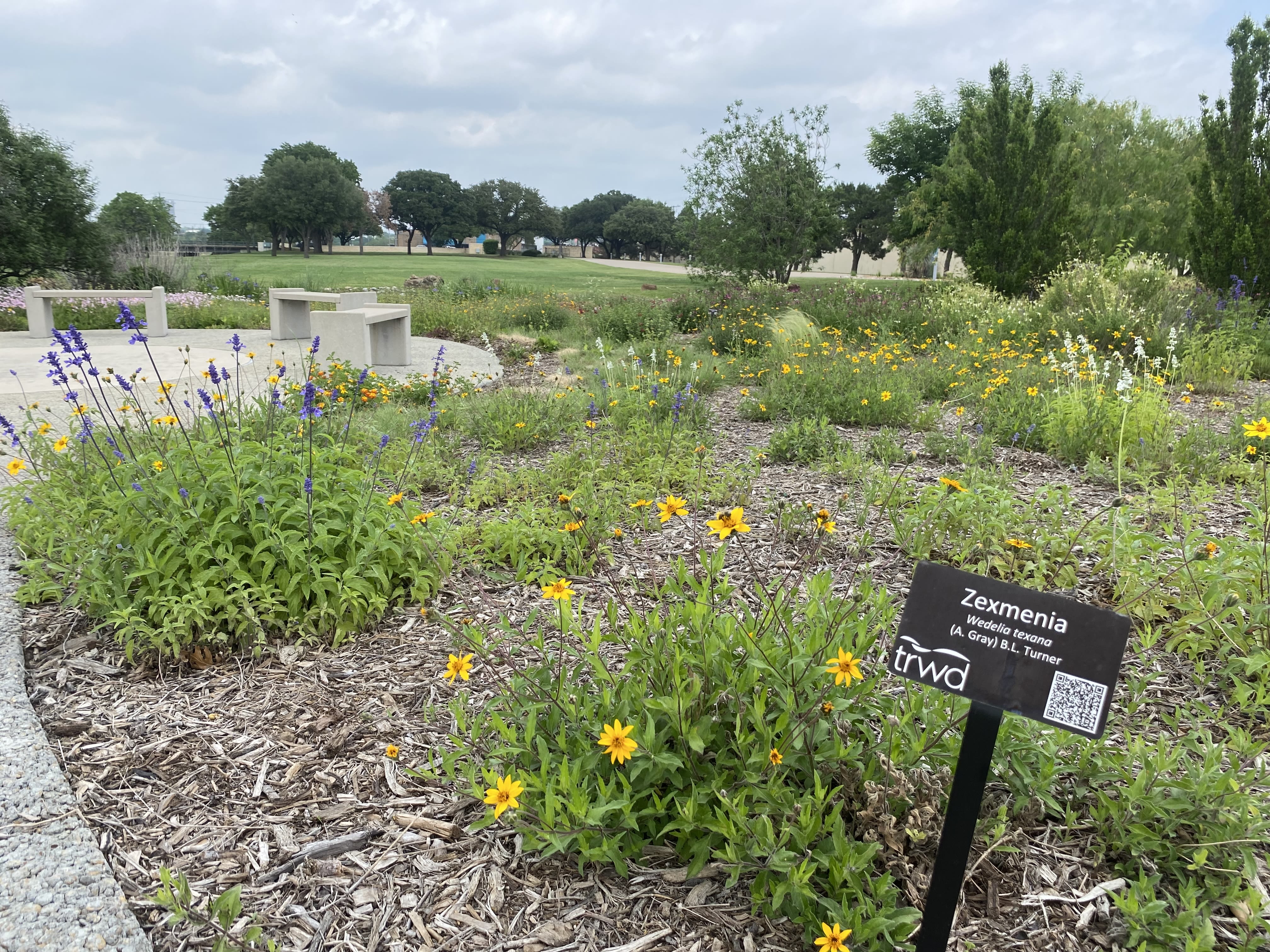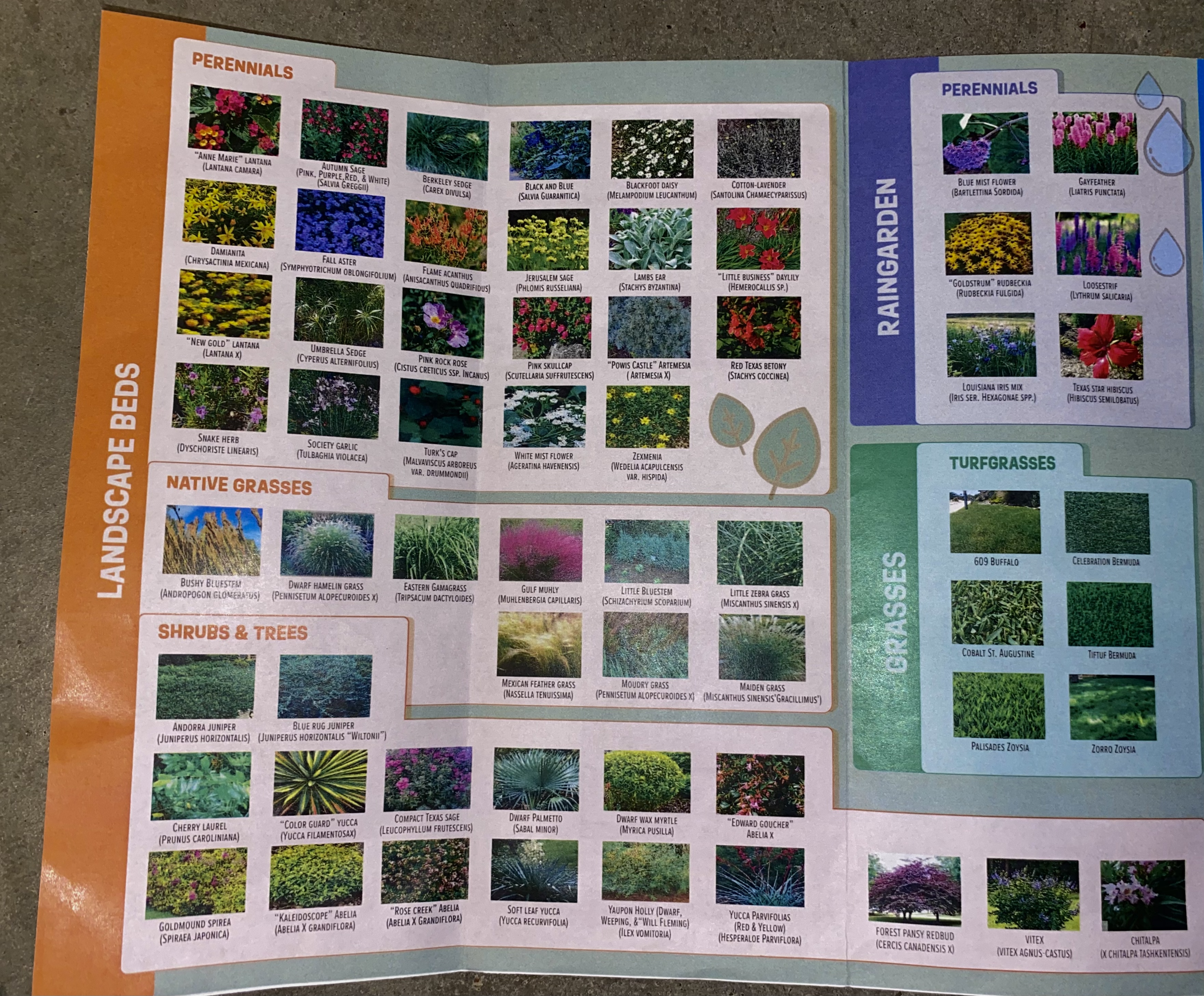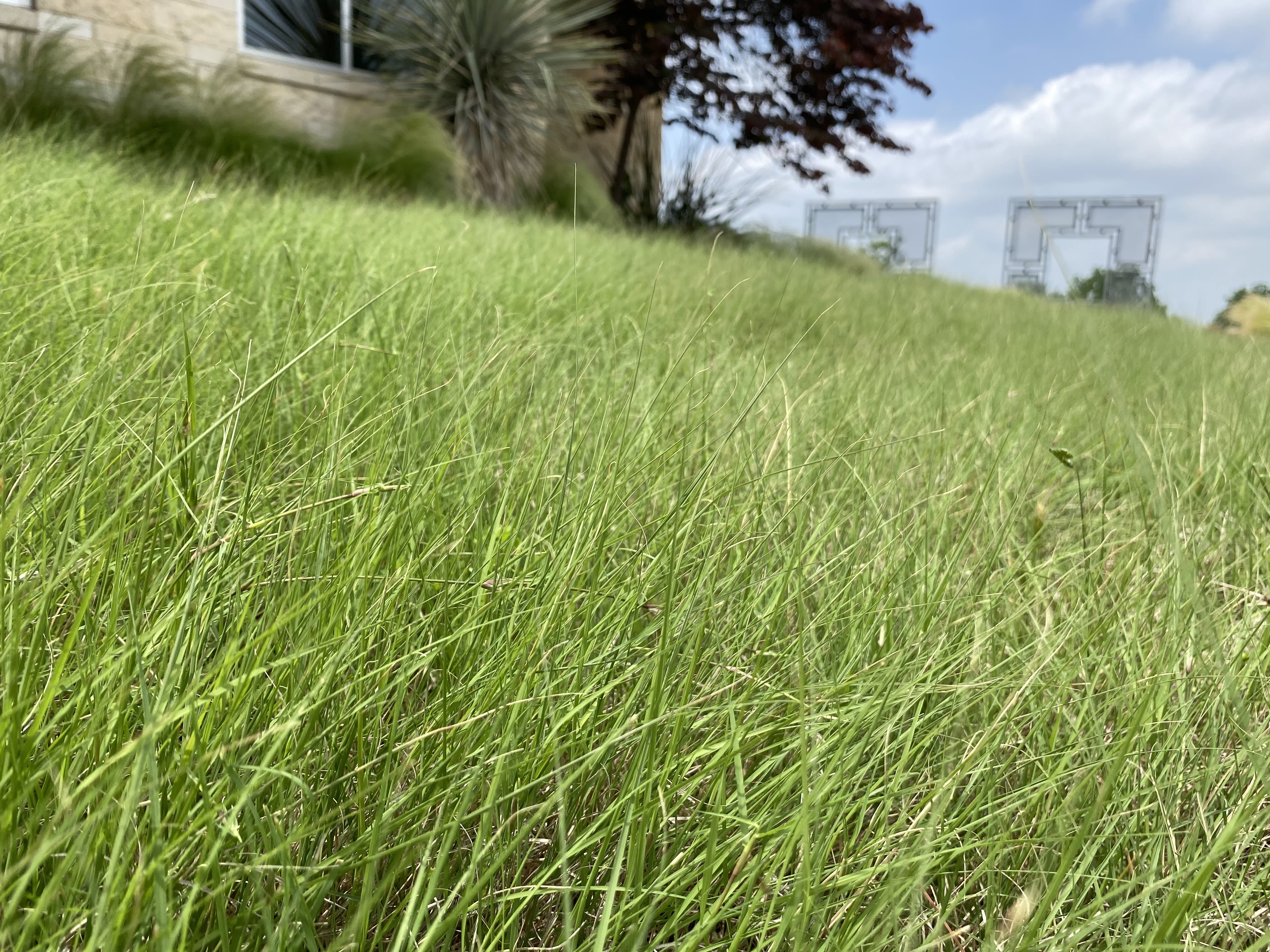Nature-Based Conservation
Rainscaping and other low impact solutions
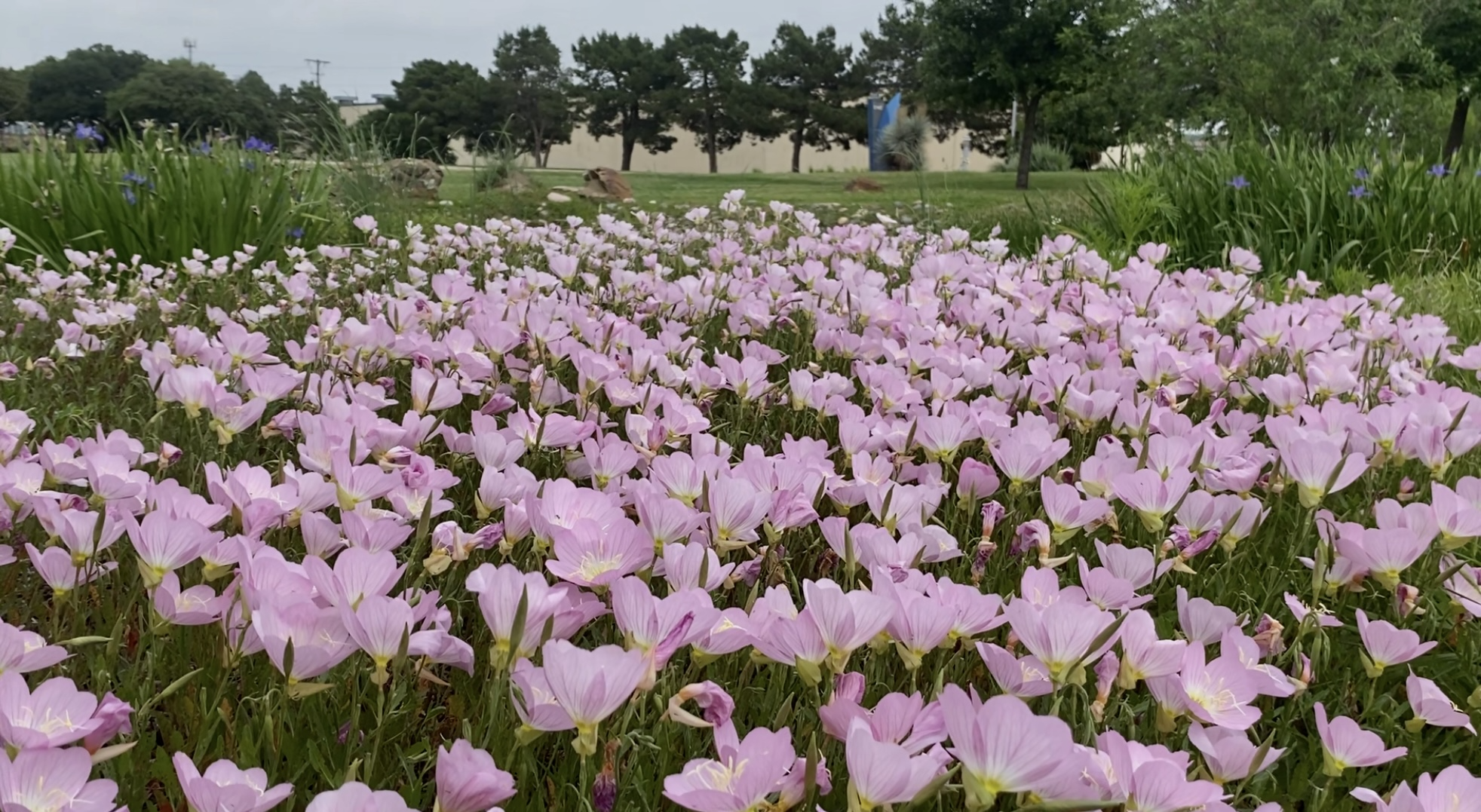
Rainscaping 101
On a rainy day against Fort Worth’s urban landscape, rainwater makes its way down rooftops, splashing onto streets and snaking towards storm drains. Most of this water becomes a burden to the city: filling up reservoirs, flooding sewers and waterways and increasing pollution and erosion. But in some places, where the landscaping is precise, stormwater can transform into a precious resource.
Rainscaping is a landscaping technique that allows for stormwater to be effectively utilized while promoting environmental responsibility. This strategy combines the principles of Low Impact Development (LID) and Green Stormwater Infrastructure (GSI) to tackle the challenge of excess runoff.
By integrating GSI practices into landscape design, rainscaping harnesses rainwater as a valuable resource rather than viewing it as a nuisance to be disposed of. This nature-based solution addresses issues of pollution and flooding, while improving both the quality and quantity of water.
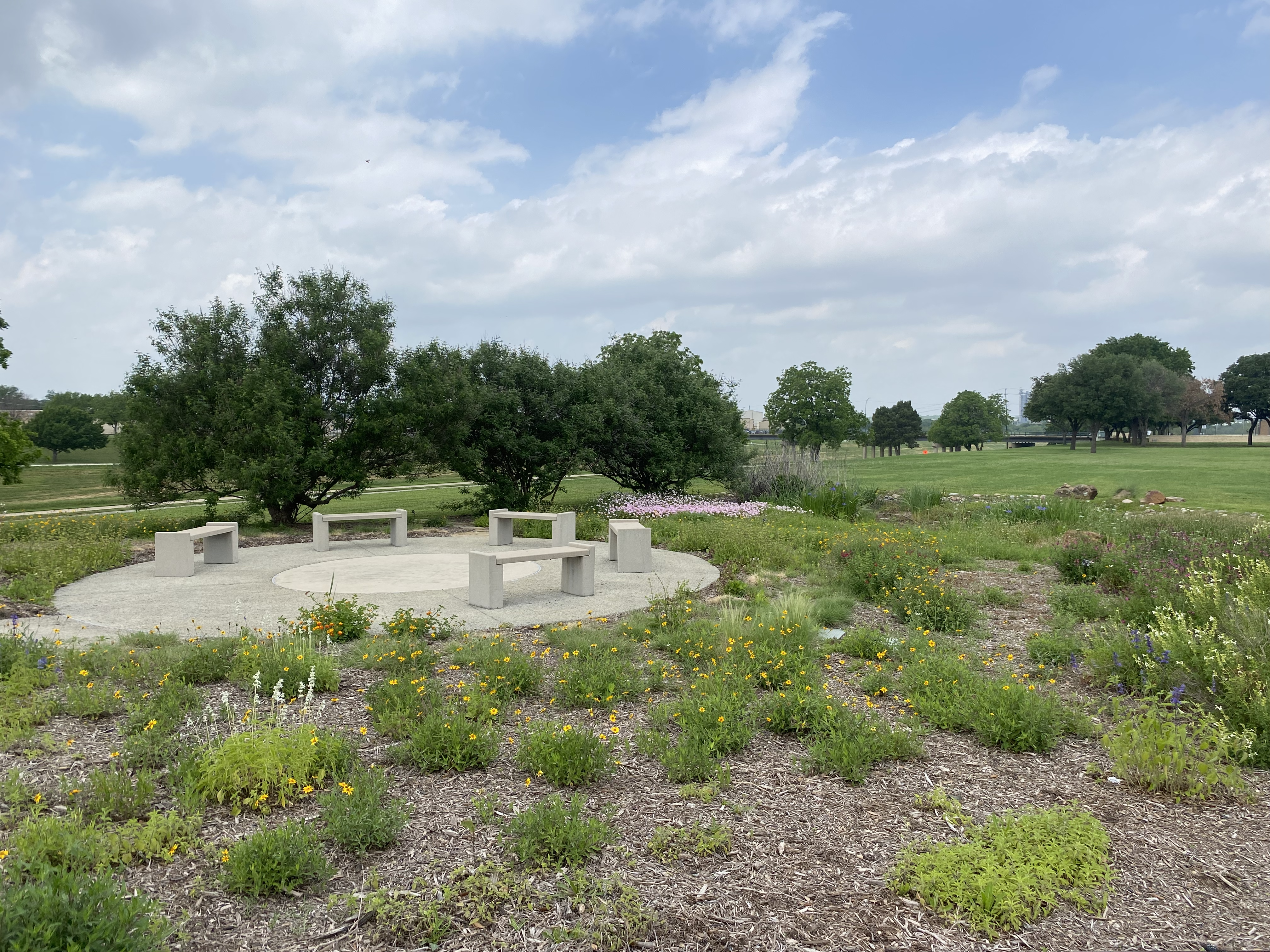

Green Stormwater Infrastructure and Low Impact Development
Wetland at the TRWD Rainscapes.
Wetland at the TRWD Rainscapes.
What is GSI?
Green Stormwater Infrastructure (GSI), a subset of LID, maximizes rainwater use through ecological engineering. The focus of GSI is to capture and redirect rainwater in order to provide enrichment to ecosystems that the water passes through. This process also aids in cleaning runoff before it reaches rivers and reservoirs.
Rainscaping is a component of GSI that maximizes rainwater use through landscape design, native vegetation, permeable surfaces, soil and rocks to clean and slow stormwater runoff.
Native plants surrounding the TRWD Rainscapes.
Native plants surrounding the TRWD Rainscapes.
What is LID?
Low Impact Development emphasizes the improvement of ecological conditions within human-developed habitats. It advocates for natural forms of development that enhance soil, water, biological and atmospheric environments. By incorporating rainwater infiltration, reuse and promoting bioavailability for plant communities, LID is able to create healthier and more sustainable ecosystems.
Rainscaping at TRWD
Headquartered in Fort Worth, the Tarrant Regional Water District supplies over 2 million North Texas residents with drinking water. In addition, the TRWD Rainscapes location seeks to educate the public by highlighting best management practices in rainscaping and protecting source water in urban areas.
“Source water protection is anything you build on your land or do with your land. The rain that falls, it all drains to a lowest point, which is a reservoir or river.”
Without mitigating excess runoff, particularly in urban areas, properties experience more erosion which results in less productive properties and sedimentation filling up reservoirs. “For me, anywhere that there’s concrete or a roof, that’s urban. It’s an impervious surface that creates more runoff,” said Wood-Ramirez.
The TRWD Rainscapes' nature-based approaches serve as a promising strategy for conserving water in a continued effort to supply the growing DFW population.
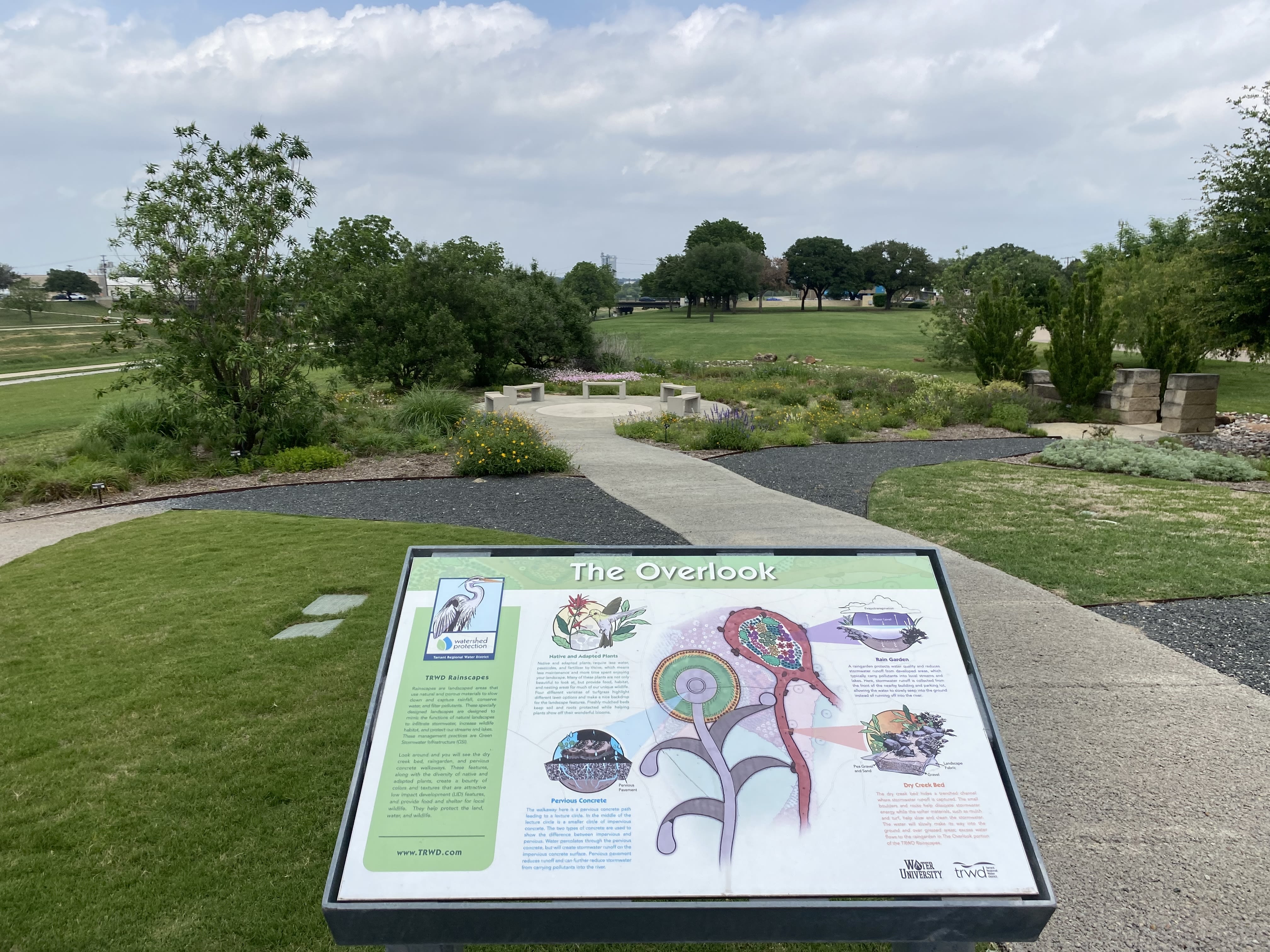
The TRWD Rainscapes use nature-based strategies and rainscaping techniques that use native plants to reduce runoff, create more resilient properties and save water.
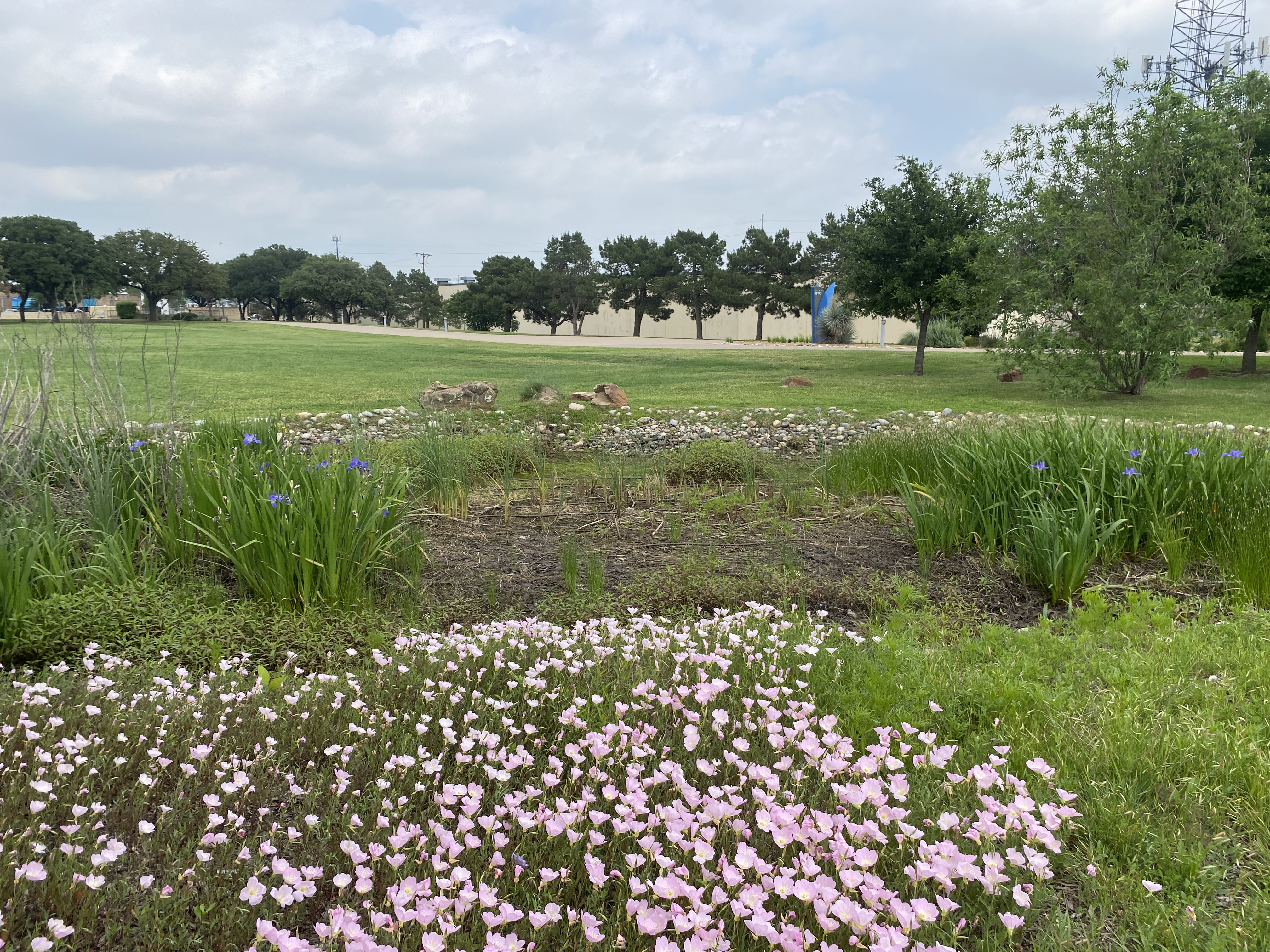
Rain Gardens
Rain gardens or rainscapes, are a highly effective way of managing rainwater runoff on a property. These are shallow depressions planted with native vegetation that can absorb and filter rainwater. By creating a depression, rain gardens can act as a basin to collect rainwater runoff, while utilizing natural plants to promote healthy vegetation and soil.
“A pound of healthy soil can store 10 pounds of water.”
Not only are native plants beautiful, but they are also highly beneficial in preventing erosion and increasing water permeation into soil. These plants are also drought tolerant and low-maintenance, requiring less watering and upkeep while continuing to increase the resilience of their ecosystem.
The TRWD promotes extensive resources that provide lists of native plants that thrive in North Texas soils.
TRWD Rainscapes Plant List Pamphlet.
TRWD Rainscapes Plant List Pamphlet.
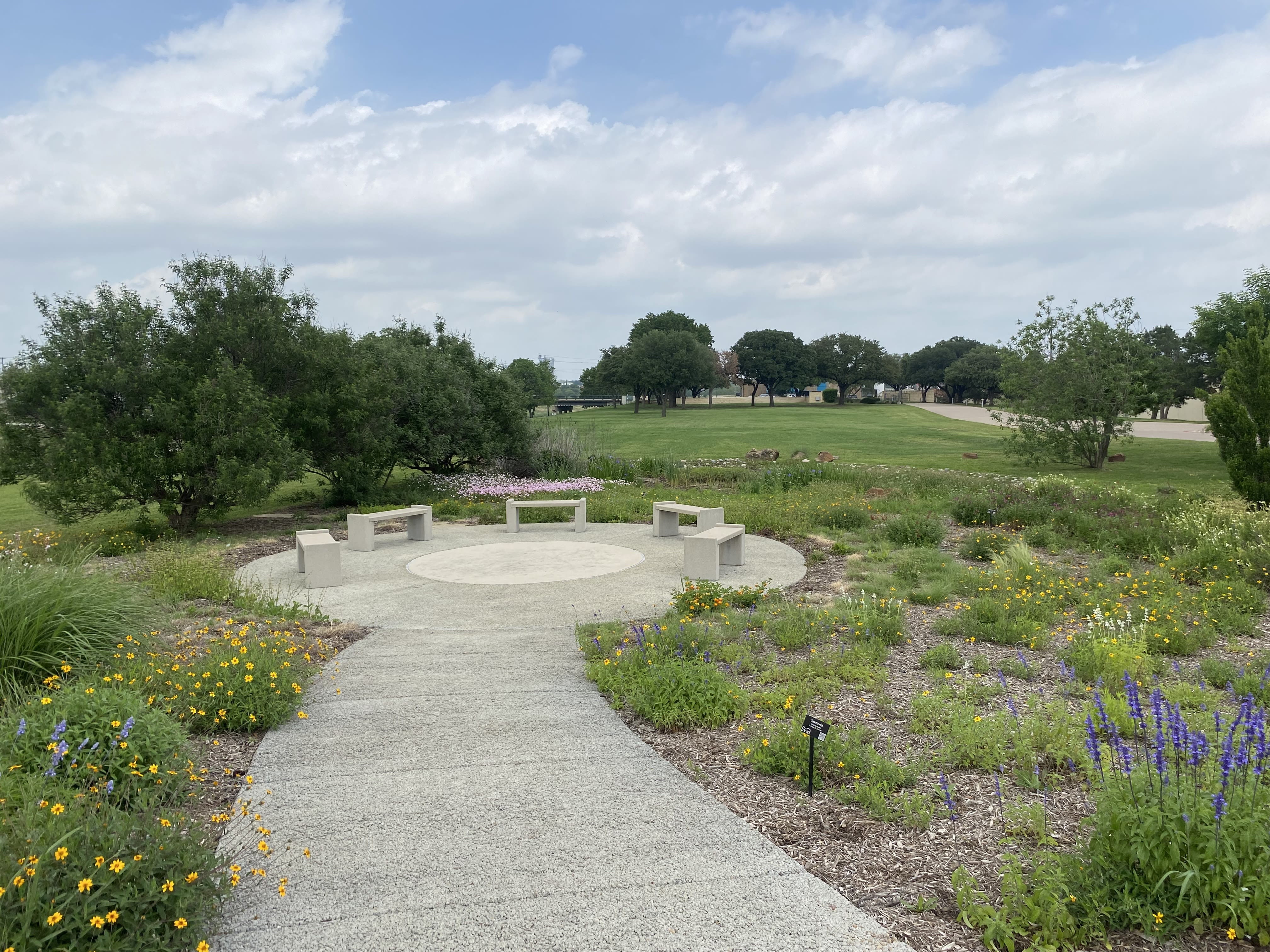
Enhanced environments
Permeable pavement at the TRWD Rainscapes.
Permeable pavement at the TRWD Rainscapes.
Permeable Paving
The TRWD Rainscapes also highlights their implementation of permeable paving. Instead of using traditional concrete or asphalt, the facility utilizes porous concrete to allow for more water to infiltrate the soil. Rocks, soil and mulch also promote water infiltration.
By allowing for more infiltration, permeable surfaces are able to replenish groundwater and improve the quality and durability of stormwater as a resource. This paving is also particularly useful in reducing high temperatures in urban areas, especially in the Texas heat.
Aside from the ecological benefits, permeable paving can also be aesthetically pleasing. Texas residents might consider implementing permeable paving if they want to improve how they manage stormwater on their own properties.
Buffalo 609 Grass at the TRWD Rainscapes.
Buffalo 609 Grass at the TRWD Rainscapes.
Turf Grass
There are four types of turf grasses at TRWD Rainscapes which have been selected for their ability to survive in Texas’ natural landscape and weather conditions. St. Augustine, Bermuda, Zorro Zoysia and Buffalo 609 Grass all require minimal watering, allowing for more infiltration of rainwater, while reducing erosion and runoff.
Wood-Ramirez says you don’t have to settle for the grass the developer puts on your property, and that property owners should consider a freeze tolerant turf grass lawn that conserves water use and is more likely to survive in the extreme weather often seen in Fort Worth.
“It takes a little bit of work to get it established, but once it’s healthy and established and you find a rhythm, then it’s very low maintenance and low water” said Wood-Ramirez.
Bioswale on TCU's campus.
Bioswale on TCU's campus.
Bioswales
Bioswales utilize sloped areas in a habitat to help absorb rainwater and reduce runoff through planting native plants and vegetation. While very similar to rain gardens, Bioswales are unique in a few key ways.
Rain gardens are typically more rounded and irregular in shape and are often located in residential yards or landscaped areas. Bioswales are typically linear, shallow channels and can often be seen integrated into roadside landscapes or parking lot medians.
Bioswales can be found across TCU's campus as a signifier of the university's efforts to reduce runoff and responsibly manage stormwater.
Rock channels implemented at the TRWD Rainscapes.
Rock channels implemented at the TRWD Rainscapes.
Rock Channels
Rock-lined pathways along the TRWD Rainscapes location assist in slowing stormwater runoff and encouraging infiltration. Rock channels can be implemented in any type of landscape that requires drainage. This strategy for managing stormwater is both aesthetic and highly effective, serving as a viable conservation solution for any urban area.
Incorporating rock paths into a garden space can create visual interest while cutting additional water use and maintenance it would typically require to fill a space entirely with plants.
Strategically creating these channels in low-lying areas is a key strategy to mitigate against standing water and create a natural pathway for the water to travel.
Conservation Through Education
The countless LID and GSI practices being showcased at TRWD Rainscapes are fueled by their mission to educate the public on water conservation and landscaping practices for their personal properties.
“The good and bad about GSI is it’s unique to every single site. There is no cookie cutter approach and you can tailor it to make it your own.”
Anyone can create a rainscape on their own property by finding a place in their yard where water typically drains. By creating a more intentional depression and filling this area with water conserving plants in the outer bed, Fort Worth residents can do their part to reduce runoff on their properties.
The TRWD Rainscapes location is open 8am-5pm Monday through Friday, and offers tours of its campus to show the community how they can implement these landscaping techniques on their own properties. Educating the Fort Worth community is at the heart of their mission, because “environmental justice is social justice,” said Wood-Ramirez.
